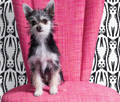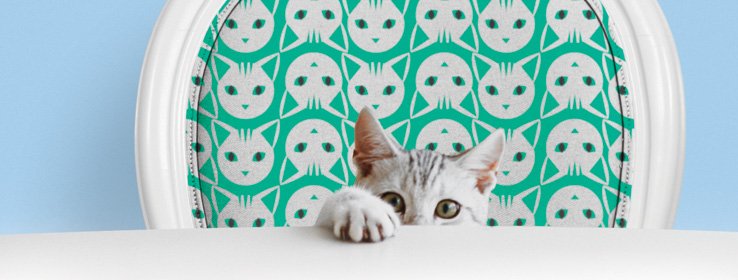Digital technology opens up new design options for taking care of business or reflecting our clients' personal vision.
People imprint their homes and fashions with what's going on in their imaginations. [This technology] enables people to create a tangible product that is precisely what they imagined.
Gaither, for example, recently designed the University of Minnesota's TCF Bank football stadium in Minneapolis and used the school's precise maroon-and-gold color scheme and trademark "M" throughout. He also worked the fight song lyrics into upholstery fabric for chairs. "It's another way of connecting you to the game of football," he says.
The desire to personally connect with something is often what drives people to create and print fabrics for their home as well. A homeowner might want an image of their Yorkshire terrier on a chair or might want to reinterpret a classic design from their wallpaper for their new accent pillows. Rather than having to scour stores to find what their clients desire, designers can go online, where online retailers and manufacturers are making ideas and colors seemingly limitless.
"If [a client's] particular passion is greyhounds, for example, you might be able to find one or two greyhound fabrics available for sale from regular fabric suppliers, but on Spoonflower we have 105 greyhound fabrics," says Stephen Fraser, co-founder of Spoonflower.com, a digital textile printing company in North Carolina. "That opens up the options considerably for interior designers. And of course you can always design your own fabric if you can't find one you like."
Rysa Pitner, founder of Fabric on Demand, another fabric and textile printing company based in Los Angeles, has seen everything created from a football-superhero jumpsuit to bacon-inspired patio furniture.
"People imprint their homes and fashions with what's going on in their imaginations," Pitner says. "[This technology] enables people to create a tangible product that is precisely what they imagined."

Pitner works with a lot of DIYers, helping them figure out how to best put their own spin on the product and select the right color. By using a continuous color spectrum, printers like Pitner can dial into any color value. "It's very similar to paint-matching," she says, although digitally she can keep adjusting tones through strike-offs until the desired color (whether from a product or photograph) is matched to perfection.
"It's wonderful to say 'anything's possible' now," Pitner says."It's really the tagline for the industry."
And while digital technology has expanded the options for both designers and clients, it has also made the designer's job more manageable.
"The digital industry has made things so much easier in many ways," says Jackie Jordan, director of color marketing for Sherwin-Williams. "First and foremost, the opportunity for research to narrow down color and design options to present to a client can save enormous amounts of time and energy on the part of the designer."
ColorSnap for android is here!
Thanks to technology, the power to pin down that perfect color is literally in your hands. Sherwin-Williams ColorSnap® for iPhone® and Android™ enables designers to snap a picture, zero in on a hue, and then find a coordinating palette.
"Although this type of technology is only as accurate as the digital image or photograph," says Jackie Jordan, director of color marketing for Sherwin-Williams, "it still gets the designer to a color family or color chip within the system, and they can make final tweaks from there."
So next time you want to create a palette to match an object you've found, remember: There's an app for that.








